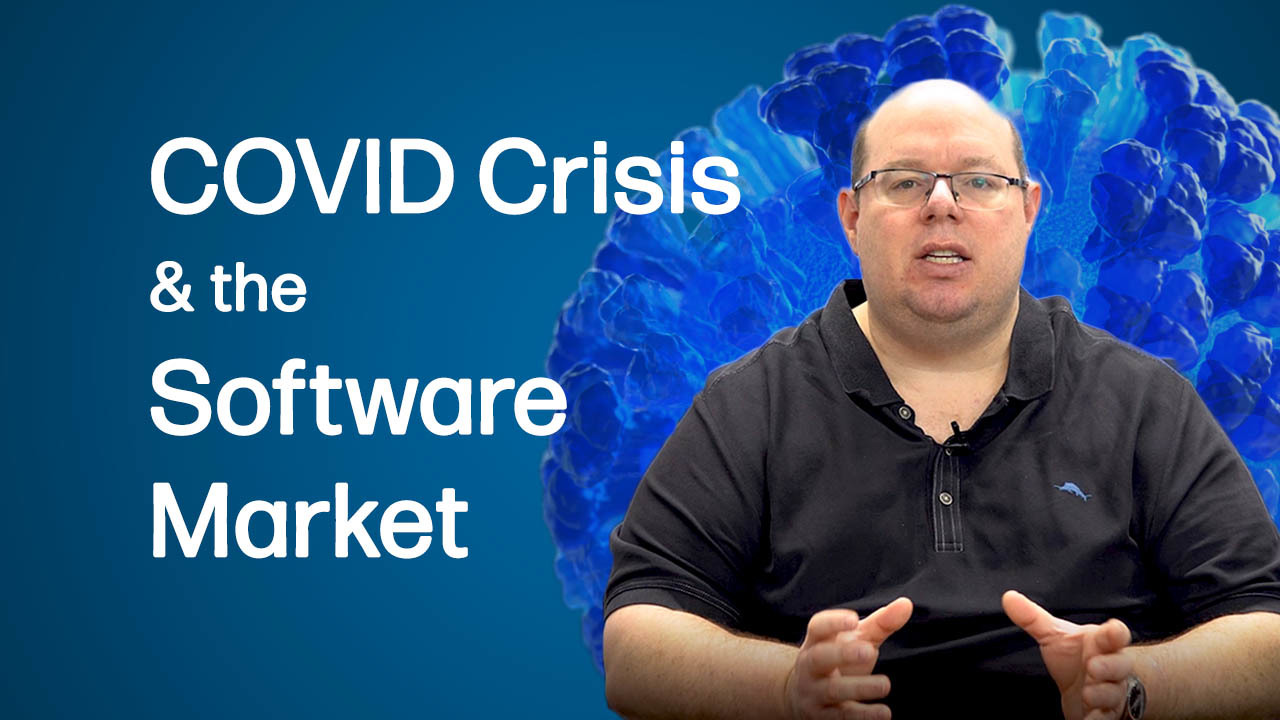SAM Maturity Assessment: What Is It & How Is It Measured?
We all have things we like to put off for as long as possible, such as laundry, unread emails, or getting back into jogging. For many companies, software asset management is treated the same way: exhausting and hopeless while constantly being put off until it is too late. But a mature SAM environment is far easier to maintain once it’s done, much like household chores. Taking the time now to understand SAM maturity can save you time and money in the long-run.
First, understand that your Software Asset Management program takes time to mature. As with everything else, not being very good at something is the first step to mastering it. The same is true about your Software Asset Management; it takes time for your company to get organized and start being effective with your Software Asset Management.
So, how can a SAM maturity assessment help to improve your SAM effectiveness?
At MetrixData360, we know you’ll see better results if you have a firm understanding of Software Asset Management, so we’ve put together this outline that answers what the 5 stages of SAM maturity are and how to reach each milestone along your SAM journey.
What is SAM Maturity?
Having a mature SAM simply means that you are running an optimized SAM program< and you figure out just how mature your SAM process is by conducting a SAM Maturity Assessment, which provides companies with a sample view of their software asset management in present time. This allows them to have a starting point to work their way up towards total SAM optimization.
5 Stages of SAM Maturity
Chaos
In the early stages of Software Asset Management, the data you collect will be scattered, unreliable, and incomplete. Your environment, as the name implies, is chaotic.
SAM teams at this point are dealing with undocumented assets, calling help desks, and an inventory system that leaves the company open to paying out huge amounts should they receive an audit. Companies here are in trouble because their data is often spread across multiple spreadsheets and owned by different people (who often don’t talk). The good thing is, if a company recognizes it is in a chaotic state, it can begin to fix the situation.
The primary job of a Software Asset Manager in this stage is simply getting a handle on what they have and understanding what quality of data they are working with. Companies at this stage are often either completely lacking in quality data, or they have insufficient policies in place to govern their IT environments, meaning this clean-up process can be time-consuming.
Reactive
An organization at this stage of SAM maturity has set up their most basic SAM environment.
With a discovery tool implemented to collect software inventory, a company in the Reactive stage can really begin to start drawing the map of their environment. Many software asset management tools in the market today give the impression that full compliance and complete visibility into their environment is gained after you install the product.
However, this vastly oversimplifies how long the process will take and the type of effort that is involved in getting your software environment under control. The next step from here is to collect license data to compare against the software inventory that has been gathered.
Receiving an audit from a software vendor in this stage will seem more like damage control, with your company scrambling to collect data and struggling to present it in a way that challenges the auditor’s findings.
Compliance Plus
Congratulations! You’ve made it to compliance! Now that a company has their licensing information as well as the software inventory, the real fun can begin as licenses and software are paired.
At this point, a company should have the info necessary to defend themselves from an audit and the larger picture of their software environment should be getting clearer. The next steps are to apply automated reporting of software inventory and license entitlements to ensure continued compliance.
Optimize
Now that you’re up to date with your licensing, it’s time to find some savings. Once automated reports are set up, finding spaces where your organization can save money is key.
At this point, you should have the full view of your software environment and your focus should be on optimizing your licenses by applying the correct sized licenses to your end users, identifying unused licenses, and leveraging your existing inventory when negotiating new contracts.
Software asset management can now prove a tool for the IT department to track the use and overall value of software assets. This will give them the data they need to advocate for needed software, retire software that no longer has value and project future usage.
Amplify Value
Your software environment is ticking along and saving you money. Now, it’s time to take those savings and make them grow.
This stage of SAM maturity is focused on the future. Often, we have seen companies buy their software simply based on what they have purchased before but now that you have reached this stage, you can focus on where you want your software profile to go.
Your SAM team should be reaching out to vendors and building relationships to help maintain compliance, negotiate better deals, and planning for end-of-lifecycle events.
The savings in this stage are reaped over time – they are the cumulative year-over-year savings from knowing exactly what your organization needs by planning for the future. Once you have reached this stage, your company can make calculated spending decisions when it comes time for contract negotiations and renewals.
Benefits of a SAM Maturity Assessment
It is nearly impossible to set up an effective SAM program without knowing how mature your program already is. Each step of SAM maturity leads you to the next step, eventually guiding you to full compliance and huge savings.
Running a SAM maturity assessment is an excellent way to mitigate risks associated with a chaotic SAM environment, such as surprise audits, large true-up fees, and production slowdowns due to improper licensing.
Implementing an Effective SAM Maturation Plan
These goals might all sound wonderfully optimistic but how are you supposed to get to that seemingly impossible goal of having your entire software estate under control?
Getting your SAM team to a mature position is a large undertaking and can take several weeks to complete. In fact, don’t be surprised if it takes two or more years to get to the Amplify Value stage across your entire software footprint.
According to ITAM Review’s article, Six Stages to Building a SAM Practice, one of the most common mistakes that companies fall prey to when trying to get their SAM under control, is trying to do too much too fast, leaving people feeling overwhelmed, confused, and discouraged from continuing.
To keep you organized during the process, below are the three crucial steps to building your way to a mature SAM strategy.
Plan
The first step to bringing your SAM team to maturity is to plan. This sounds simple, but having a step by step process laid out keeps your team on track and focused on what needs to be done next. Often SAM teams just begin pulling data and trying to assign licenses without a plan, which ends up causing an already complex process to become more complex.
Sit down with your team and draw up a roadmap to success that everyone can access. This map should detail the steps required to hit each milestone of SAM maturity, and each team member’s role in reaching them.
Build
Now that you have your plan laid out, it is time to start building the SAM machine that will keep your organization in compliance.
Each member of your team needs to know exactly what needs to be done. This is where you should be implementing tools to get the cleanest data you can get your hands on.
Remember the golden rule of data during his period: garbage in, garbage out.
The better the data your team is collecting about your instances, software editions, devices, and license types, the better your position will be once you come into compliance. Make sure that you get a SAM tool in place that can effectively monitor your software estate. If you’d like more information on making an informed decision about buying your SAM tool, visit our article What are Software Asset Management (SAM) Tools: Functions, Advantages, and Disadvantages.
Maintain
Now that your SAM team has brought your organization into compliance, it’s time to set up a maintenance program. Luckily, now that your environment has been cleaned up, maintaining compliance and a strong ELP is much easier than working from a chaotic state.
Focusing on the future is imperative for good SAM maintenance. Preparing for end-of-lifecycle by beginning negotiations early, planning for growth in the company and the licenses that will be necessary for new employees, and creating positive relationships with vendors are all imperative to good SAM maintenance.
Within your company, foster a strong software awareness mindset, since SAM isn’t a one time thing; it must be an ongoing demonstration of discipline and dedication.
A Better SAM Solution
We know that building a mature SAM position is a daunting task; there are many stages that need to be handled accurately since mistakes at one stage can cause further disruptions down the line, and the amounts of money at stake can reach into the millions of dollars.
Fortunately, MetrixData360’s SAM Compass program can help to ease that burden. Our robust Software Asset Management as a Service offering is perfect for organizations that need the expertise of a licensing team, without the headache of training.
While crafting a mature SAM position is no overnight task, an experienced team can do it in a fraction of the time due to the steep learning curve faced by any new people to the field – license agreements are complex contracts, often spanning across several documents. Luckily, our team here at MetrixData360 has experience with all major licensing formats from the major software publishers.
If you would like any more information about building a SAM team or maturing your SAM strategy, please read through the educational materials in our learning center, or feel free to reach out to our Director of Client Success and we’ll get back to you in 24 hours.













